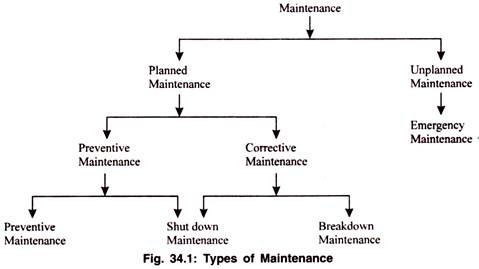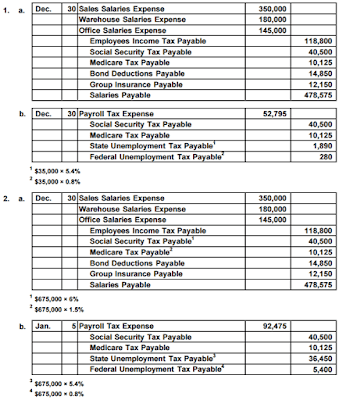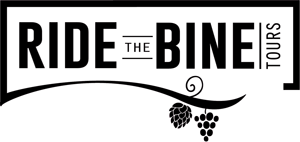
This will help you get the hang of the process before you move on to tougher tasks. Training the estimator and computing
the score are parallelized over the different training and test sets. When that happens, it’s key to surround an employee with the right supporting team. A good team will include members from all phases of the curve, who can contribute diverse perspectives and skills. When the results of a large number of individual trials are averaged then a smooth curve results, which can often be described with a mathematical function.
- Their results indicated that the optimal switching time is determined by the characteristics of product and process, market factors, and the features of learning curve on this production.
- Remaining market segments or remaining potential efficiencies or efficiencies are found in successively less convenient forms.
- Determining which approach to take depends on whether the desired performance can be directly measured.
As workers produce more product, the per-unit cost will often decrease. Learning curves are used by psychologists, students, teachers, employees and employers to plot progress and set expectations on how much time, training and study might be required to attain competent knowledge of a subject. In IT, learning curves are considered in user interface and product design.
How To Practice Self-Advocacy in the Workplace (Go-to Guide)
For example, consider the graph below that demonstrates the approximate average time needed to perform a given number of tasks. A high or steep learning curve indicates that it takes a substantial amount of resources to perform an initial task. However, it also signifies that subsequent performance of the same task will take less time due to the task being relatively easier to learn.

Creating an environment of self-awareness can increase both the rate at which your staff learns and performance quality. Provide educational opportunities for self-understanding and by extension, others. The more we understand the way our brains work, the more empathy and patience we have towards others. Create opportunities for your staff to evaluate their learning styles and follow up with training specifically geared to capitalizing on the way they absorb new information.
Models
He described two sides of the same process and had presented two learning curve graphs. Later, Arthur Bills described the learning curve in his work “General experimental psychology” (Bills, Arthur Gilbert, in 1934, page 192). He mostly was focusing on memory studies and developed a forgetting curve theory.

It reveals when people are ready for bigger challenges—something that’s especially critical if they’re in mastery, which may mean they’re getting restless and need to jump to a new S Curve. Often the employees don’t even realize they’re ready to take the leap, but their managers push them anyway. The learning curve has many applications within the realm of business.
Examples of learning curve
Subsets of the training set with varying sizes will be used
to train the estimator and a score for each training subset size and the
test set will be computed. Afterwards, the scores will be averaged over
all k runs for each training subset size. Lower Learning Curve percentages mean higher degrees of improvement. As a result, the lower the learning curve percentages, the steeper the slope of graphs. Zimmer also comments that the popular use of steep as difficult is a reversal of the technical meaning. He identifies the first use of steep learning curve as 1973, and the arduous interpretation as 1978.
Snow in “Learning Curve” Adapting to Wright Porsche – Sportscar365 – Sportscar365
Snow in “Learning Curve” Adapting to Wright Porsche – Sportscar365.
Posted: Fri, 18 Aug 2023 15:35:04 GMT [source]
Whether it is a toddler who is getting familiar with phonics or an adult who is learning a new language, this theory can be used everywhere. The learning curve is basically a graphical representation of the time taken to do a task. As per this curve, the more times a person does a job, the less time it takes to do it successfully. This curve is used to illustrate activities that are more difficult to learn, but performance increases rapidly once the basics have been mastered. Note that the cumulative quantity must double between rows—to continue the table, the next row must be calculated using a quantity of eight.
What is a Learning Curve?
A learning curve is a mathematical concept that graphically depicts how a process is improved over time due to learning and increased proficiency. The learning curve theory is that tasks will require less time and resources the more they are performed because of proficiencies gained as the process is learned. The learning curve was first described by psychologist Hermann Ebbinghaus in 1885 and is used as a way to measure production efficiency and to forecast costs. Learning curves, also called experience curves, relate to the much broader subject of natural limits for resources and technologies in general. Approaching limits of perfecting things to eliminate waste meets geometrically increasing effort to make progress, and provides an environmental measure of all factors seen and unseen changing the learning experience. Perfecting things becomes ever more difficult despite increasing effort despite continuing positive, if ever diminishing, results.

Teach them how to work with their peers who process information in dramatically different ways. This not only improves the learning curve but also benefits overall morale, cohesive communication, successful collaboration and general job (and life) satisfaction. You can use tips to speed up your learning process, but at the same time, be prepared to dedicate ample time to these improvements. After an initial period of complex learning, the curve will begin to level off, meaning you’re getting better at your chosen skill[3]. Because learning curve data easily creates trend lines, it’s fairly common to see learning curve data depicted graphically.
The Learning Curve
Once this initial learning period has been completed, performance will increase steadily as the learner becomes more comfortable with the task. At that point, the learner’s performance will level off, after which point they will likely see only slight increases over time. An L&D manager might encounter this type of curve when a new productivity tool is introduced to employees in their office, for example.
There are learning curves for each person developing each new skill. The collection of individual learning curves can be compiled into an organizational learning curve. This can be a graph with the quality of performance on the horizontal axis and the number of attempts on the vertical. Learning curves are never the same and rarely are smooth, perfect curves (we dive into this more in the “Types of Learning Curves” section). The learning curve may refer to a specific task or a body of knowledge.
The 1st curve of achievement represents an increase in productivity over each unit of trial. Natural language understanding (NLU) is a branch of artificial intelligence (AI) that uses computer software to understand input in the form of sentences using text or speech. Encourage short and long-term goals and support employees’ commitment to them. Ensure channels of communication are in place throughout positions and teams so that employees struggling to meet their goals can ask for assistance or insight to get back on track. If you’re improving your writing skills, you can time yourself and write a piece to later send to a professional writer for evaluation. When you’re starting out with a new process, it is best to go ahead with tasks that you are already well-aware of.
This is the basis for the learning curve formula, the “Cumulative Average Model” (or “Wright’s Model”), which was described by T.P. Wright in 1936 in his work “Factors Affecting the Cost of Airplanes“, after realizing that the cost of aircraft production decreased with the increase in production performance. There are currently different variations of the original formula used today in specialized applications, but the idea remains familiar to the original formula. This learning curve describes an employee who begins slowly, rapidly gets the hang of the new skill, then levels off as they meet peak production.
- At that point, the learner’s performance will level off, after which point they will likely see only slight increases over time.
- Afterwards, the scores will be averaged over
all k runs for each training subset size. - You may be tempted to try out new methods of learning for yourself, but in the process of improving your learning curve, time is of immense importance.
- The model was widely applied during World War II (WWII) when it was realized that the cost of aircraft decreased with the increase in production performance.
- The formula can be used as a prediction tool to forecast future performance.
- Target relative to X for classification or regression;
None for unsupervised learning.
The same kind of slowing progress due to complications in learning also appears in the limits of useful technologies and of profitable markets applying to product life cycle management and software development cycles). Remaining market segments or remaining potential efficiencies or efficiencies are found in successively less convenient forms. A comprehensive understanding of the application of learning curve on managerial economics would provide plenty of benefits on strategic level. Demeester and Qi [20] used the learning curve to study the transition between the old products’ eliminating and new products’ introduction. Their results indicated that the optimal switching time is determined by the characteristics of product and process, market factors, and the features of learning curve on this production. Konstantaras, Skouri, and Jaber [21] applied the learning curve on demand forecasting and the economic order quantity.
Become familiar with learning data and obtain a practical tool to use when planning how you will leverage learning data in your organization. This model represents a more complex pattern of learning and reflects more extensive tracking. The 2nd illustrates an eliminative, or declining, curve of time needed to perform the same task. A str (see model evaluation documentation) or
a scorer callable object / function with signature
scorer(estimator, X, y). People’s positions on the curve reveal whether they are ready to seek new challenges and what kind of development plan their managers should craft for them.